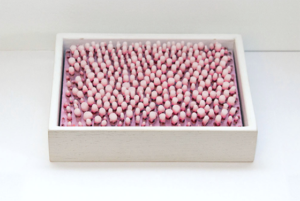

Heat illness symptoms can occur even after work has stopped. Heat illness can also affect employees work performance and increase their risk of having accidents.Įmployees should be encouraged never to discount any discomfort or symptoms they are experiencing when working in heat, after work or before the next workday. Heat illness affects the body, causing employees with mild symptoms to experience weakness, tiredness, and mental confusion, or even exhibit irritable or erratic behavior. Types of Heat Illness and Common Signs/Symptoms
#Layers of fear trigger warnings full
Victims of heat illness may not report the full range of symptoms they are feeling because they: As a result victims may be placed at a greater health risk.Ī person certified to provide first aid should be available at the work site to initially evaluate potential heat illness victims. Also, employees may not accurately recognize and report the symptoms. The symptoms of heat illness may vary between individuals. Warning Variability in Symptom Recognition and Reporting In heatstroke, the person’s body temperature rises rapidly damaging the brain, muscles and vital organs causing death. The physiological strain on the body from heat illness may cause the person to become dehydrated, weak, tired, and confused.Īs dehydration gets worse the body can no longer keep its temperature within the normal range, sweating stops and severe heat illness occurs. Because the body looses water and the salts that are needed for the muscles to work, muscle cramping may occur. Prolonged sweating can deplete the body of water and salt causing dehydration. Shifting blood to outer body layers (the "shell") causes less blood to go to the brain, muscles, and other organs (the "core"). During an hour of heavy work in hot weather, the body can easily sweat out one quart of water.

Sweat glands in the skinĭraw water from the bloodstream making sweat. The skin, the brain triggers sweating to cool the body. Process does not cool the body fast enough, or the outside air is warmer than That the heat can be released into the cooler outside environment.
#Layers of fear trigger warnings skin
More blood flows to the outer layers of the skin from the internal "core" so When the body starts to overheat the blood vessels get bigger and the heart beats faster and harder.

The body losses it's "heat balance" because it can not shed heat at a fast enough rate. People suffer from heat illness when their bodies are not able to get rid of excess heat and properly cool. Human beings need to maintain their internal body temperature within a very narrow range of a few degrees above or below 98.6° F. Heat Illness – "More to the Story" What Happens to the Body "Heat Illness" means a serious medical condition resulting from the body's inability to cope with a particular heat load,Īnd includes heat cramps, heat exhaustion, heat syncope, and heat stroke (see T8 CCR Section 3395). T8CCR 3395(b) Definitions defines “Heat Illness” as the following: Cal/OSHA investigations (Study 2) that in 2006 18% of the suspected victims of heat illness died, and 42% required hospitalization for more than 24 hours.Ĭal/OSHA investigations showed that 52% of the suspected victims of heat illness died, and 32% required hospitalization for more than 24 hours.


 0 kommentar(er)
0 kommentar(er)
